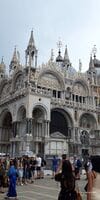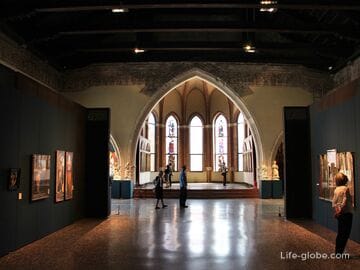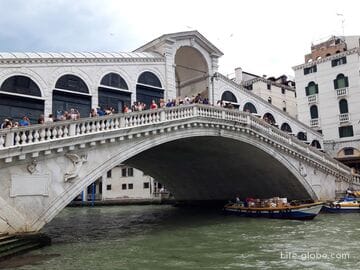St. Mark's Cathedral or Basilica of San Marco (Basilica di San Marco, in Venetian: Baxełega de San Marco) is the main church of Venice, which is the city cathedral and the most famous symbol of Venice.
The relics of St. Mark the Evangelist, the patron saint of the city, are kept in the Cathedral of San Marco. The cathedral is also an image of Venetian-Byzantine architecture and attracts attention with mosaics on a golden background, sculptures, a valuable altar, a museum and a terrace that can be accessed.
The cathedral is located next to the Doge's Palace, on the main square of Venice - St. Mark's Square (Piazza San Marco), the former political and religious center of the Republic of Venice.
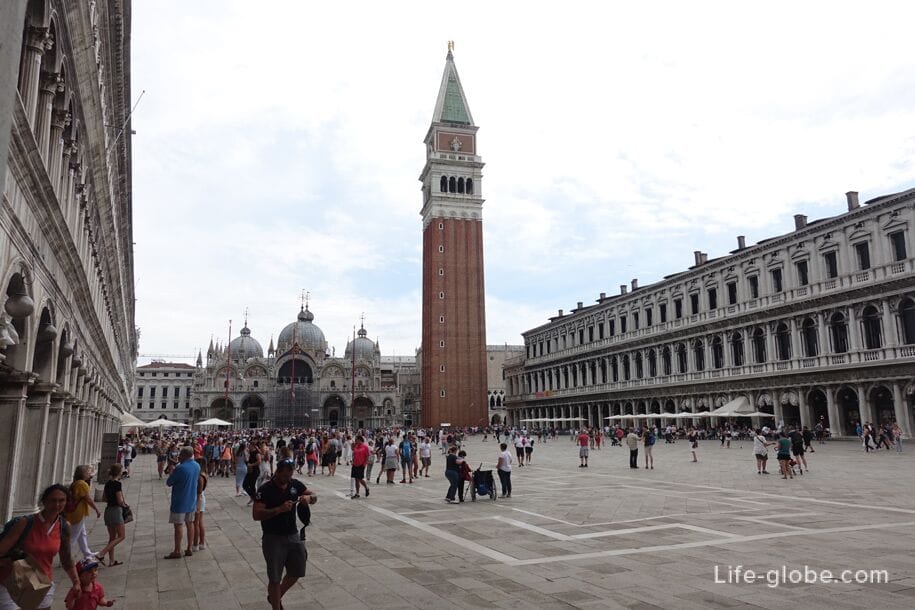
The history of the church began in 828 (829), when the body of St. Mark was transported from Alexandria, Egypt, to Venice by two Venetian merchants commissioned by the Doge (the title of the elected head of the Republic of Venice) Giustiniano Partecipazio.
To accommodate the relics, the first Basilica of St. Mark was built by order of the same Doge next to the Doge's palace, the consecration of which took place in 831.
From then until 1807, the basilica was the court chapel at the Doge's palace.
In 976, the church burned down due to an uprising against Doge Petro Candiano IV and was rebuilt under Doge Orseolo I the Saint.
In 1063, the rebuilding of the church began under Doge Domenico Contarini. After that, the church received its current structure and chronologically today's cathedral is the third church of St. Mark. In 1071-1084, under Doge Domenico Selvo, the mosaic decoration of the shrine was begun. The consecration took place in 1094 under Doge Vital Falla.
In 1204, during the Fourth Crusade (under Doge Enrico Dandolo), after the looting of Constantinople (now Istanbul, Turkey), marbles and works of art were transported to the basilica: four horses, an icon of Our Lady of Nicopea, enamels of the Golden Altar, relics, crosses, bowls and discos, which are now kept in the cathedral museum.
Subsequently, the church underwent various modifications: the addition of decorations, the construction of an iconostasis, sacristy, chapels, altar, etc.
After the fall of the republics in 1797, in 1807 the basilica became the see of the Patriarch of Venice, previously located in the Church of San Pietro a Castello (Basilica di San Pietro di Castello) in Venice.
The exquisite marble facade of the church with domes, mosaics, sculptural and relief decorations makes an unsurpassed impression.
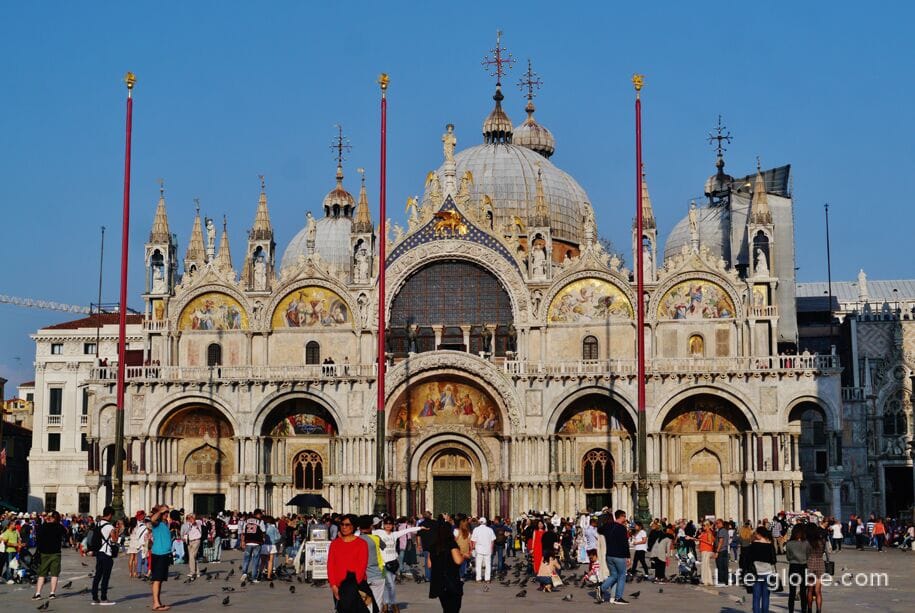
Among the mosaics on the facade, the only surviving mosaic from the originals of the thirteenth century is the mosaic above the first portal on the left, the portal of Sant'alipio, which represents the entrance of the body of San Marco to the basilica. Other mosaics during the history were damaged and rebuilt between the seventeenth and nineteenth centuries with the preservation of the original views.
On the curved arches of the upper order, decorated in floral Gothic style, statues of cardinals and theological virtues, four holy warriors and St. Mark stand out.
Next to the portals leading to the church, there are several niches in which mosaics depicting the Virgin, the Apostles and the Evangelists are placed.
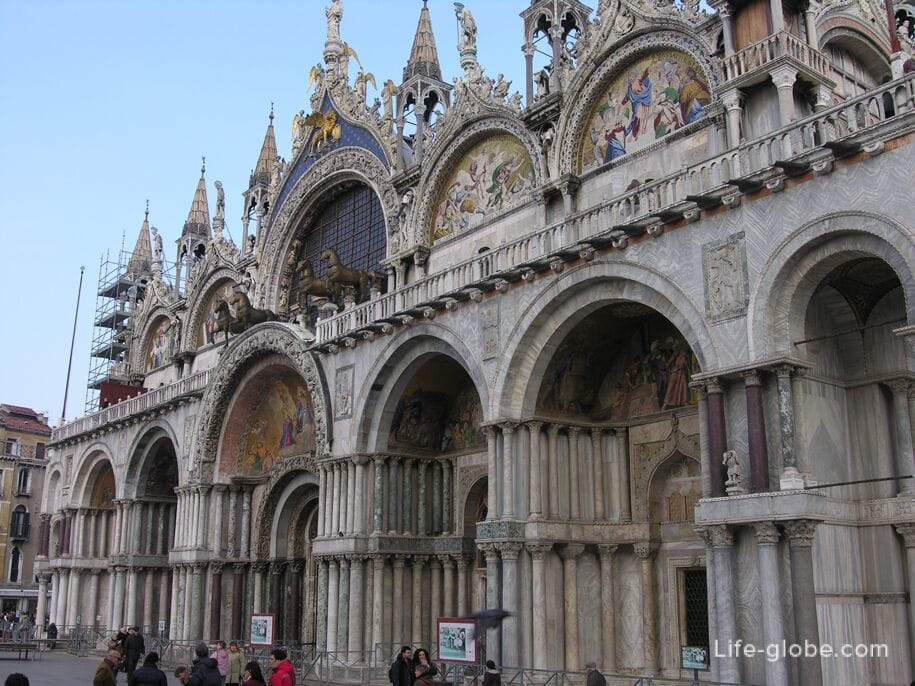
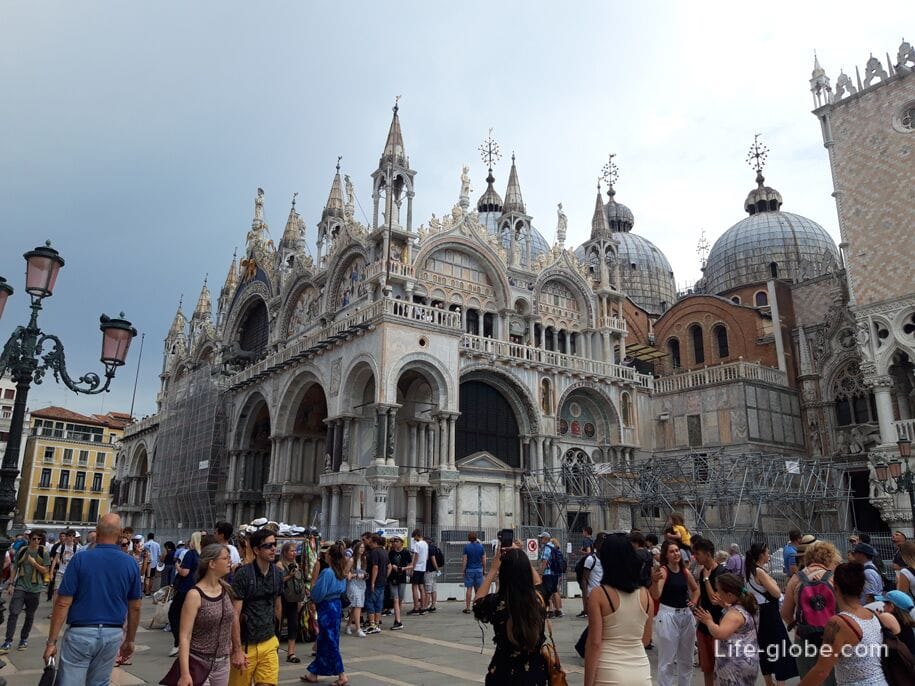
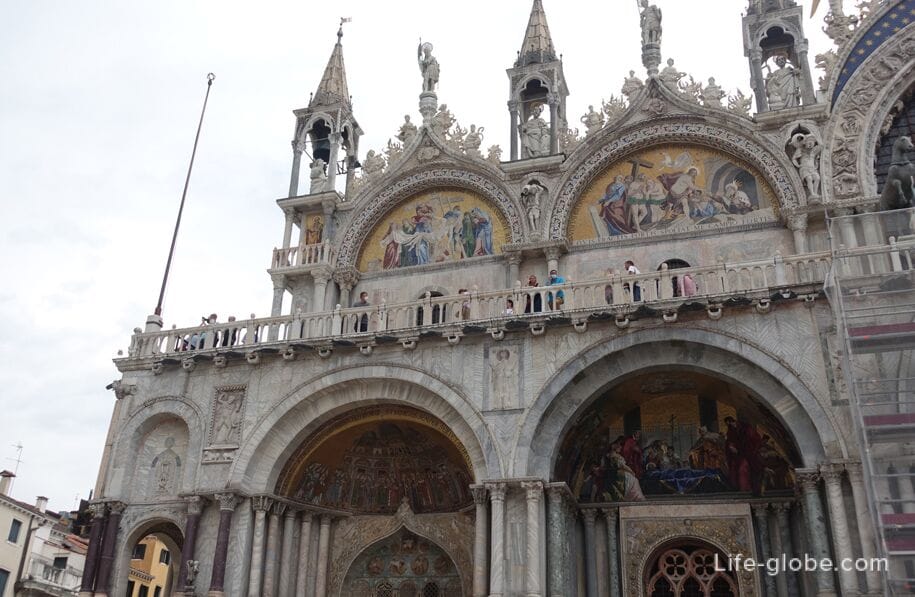

In the arch of the central window, under the statue of San Marco, there is a winged lion with an open book with the words: "Pax tibi Marce Evangelista meus".

In the center of the main facade (above the central portal) there are 4 famous horses, which were originally originals from the hippodrome of Constantinople. After a long restoration, begun in 1977, the horses of San Marco are kept in the San Marco Museum inside the basilica, and copies are now placed on the balcony.
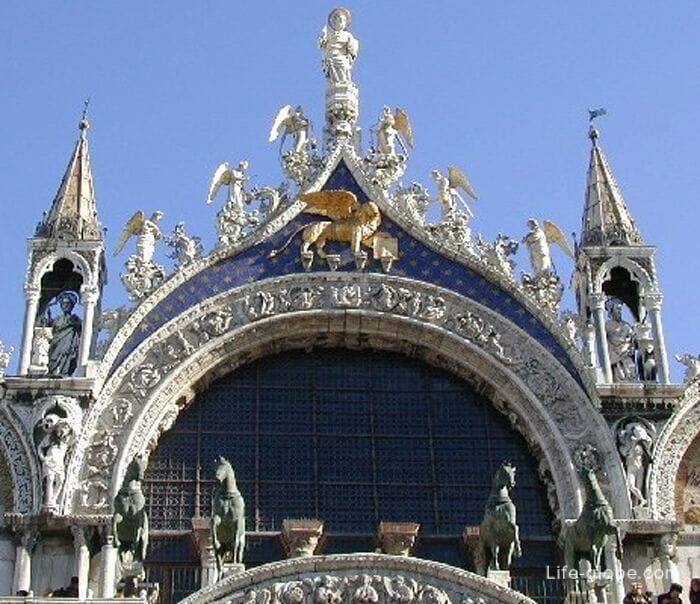
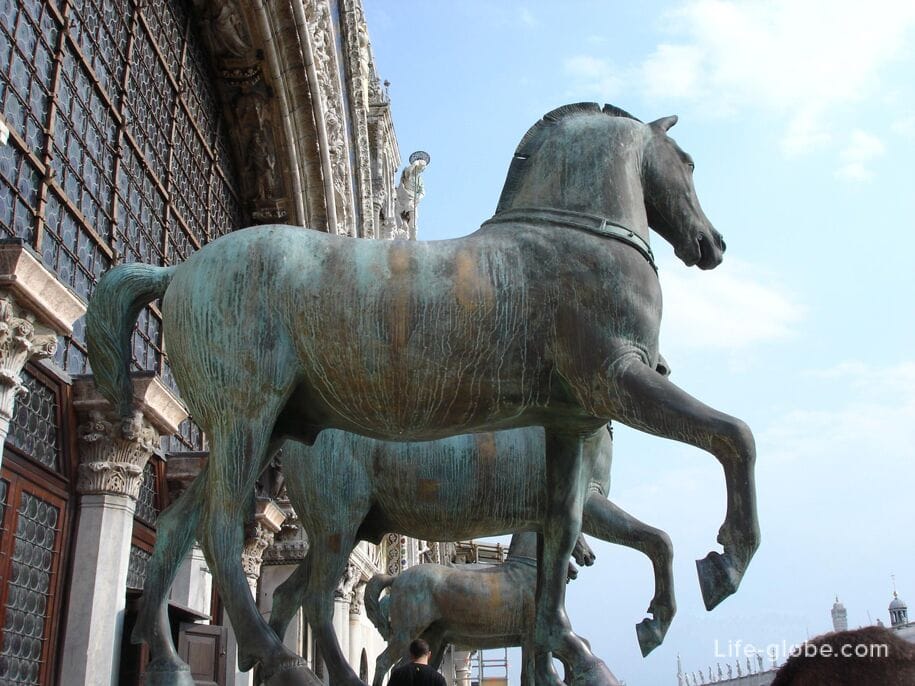
On the south-western corner of the cathedral you can see a monument to the Tetrarchs, which is a double sculptural group of Egyptian red porphyry, consisting of four figures in high relief. The height of the figures is 1 meter 36 centimeters.
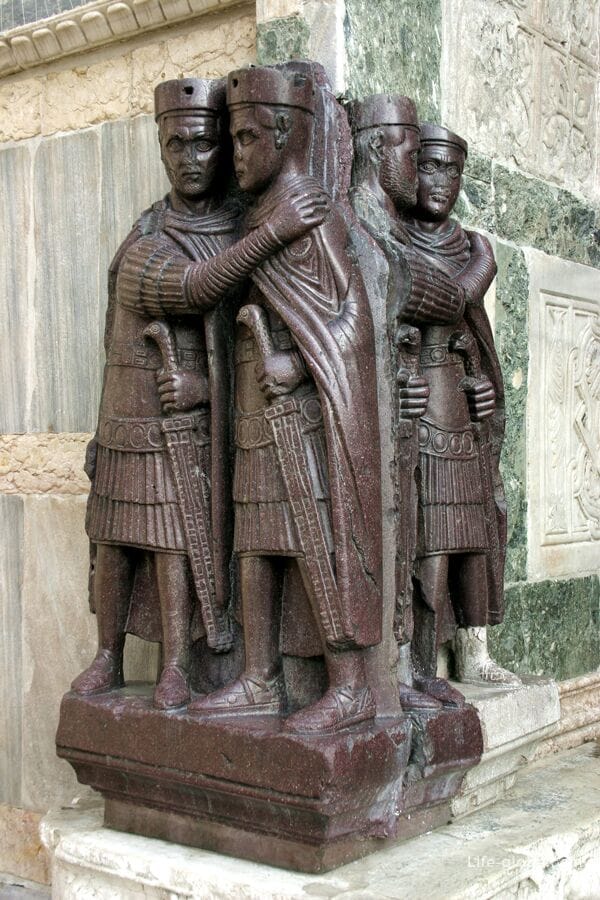
The vestibule of the cathedral (an extension in front of the entrance to the temple) impresses with mosaic domes on a golden background with scenes of Genesis and episodes from the lives of Noah, Abraham, Joseph and Moses.
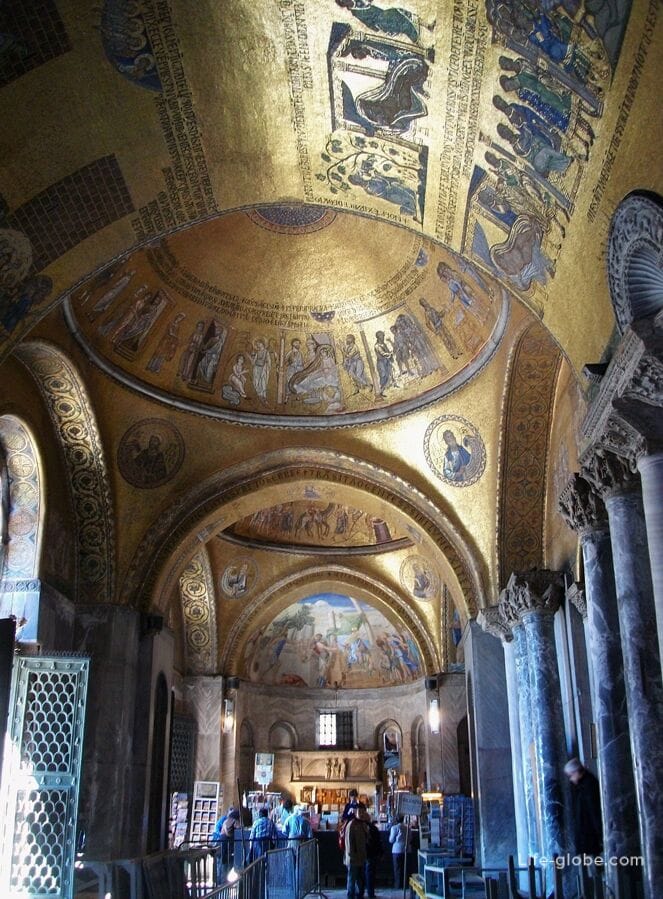
Interior and Museum of St. Mark's Cathedral
The plan of the cathedral is a Latin cross with five domes connected by large arches.
The interior is covered with numerous fine mosaics, the oldest of which are those in the apse: Christ Pantocrator, however, remade in the sixteenth century, and figures of saints and apostles.
In general, the basilica has more than 8000 square meters of mosaics that cover the walls, arches and domes. Mosaics have been developed for 8 centuries and represent stories from the Bible (Old and New Testaments), allegorical figures, events from the life of Christ, the Virgin Mary, St. Mark and other saints.
The interior is also rich in sculptures, some of which were collected in other places (not created specifically for the cathedral), and then were placed inside the church.
The cathedral has altars and three iconostases: in the presbytery and in the aisles of Saints Peter and Clement. The last two are small and carry figures of female saints.
As a result, everything turns out to be a picturesque single complex, although, of course, it is rather a unity perceived by the senses and imagination than logical and structural.
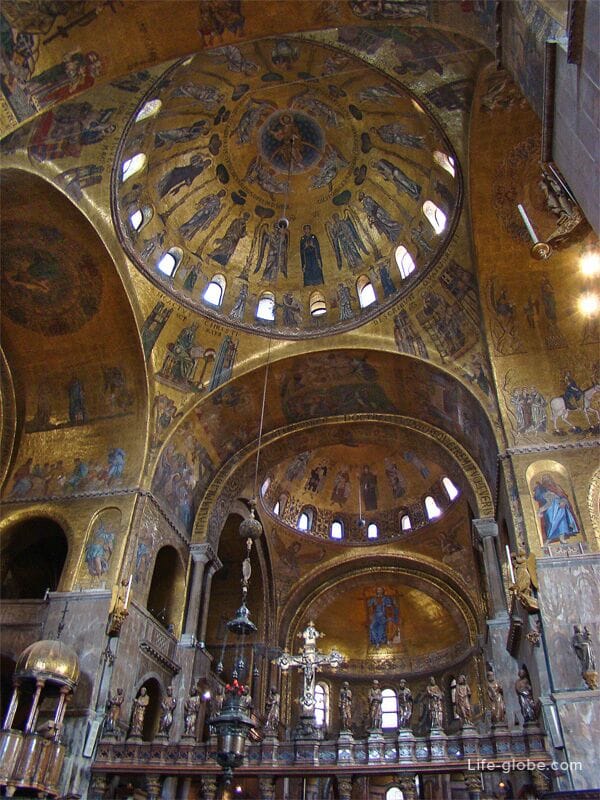
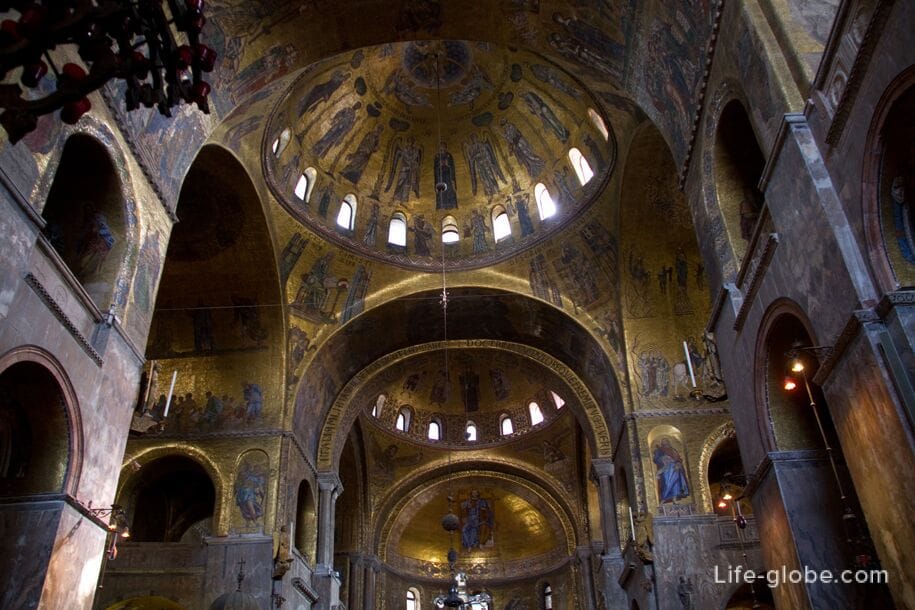
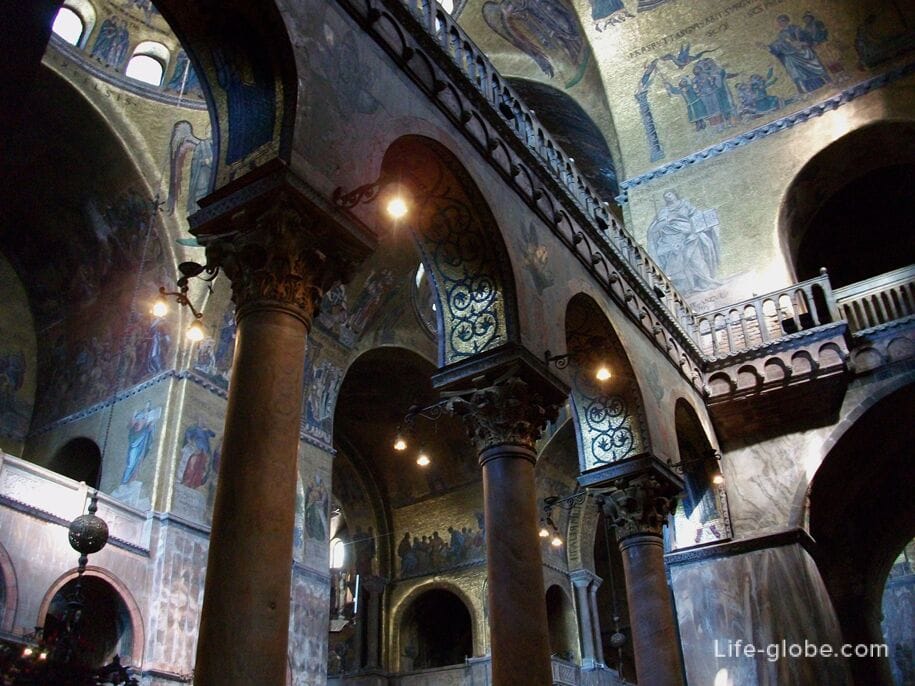
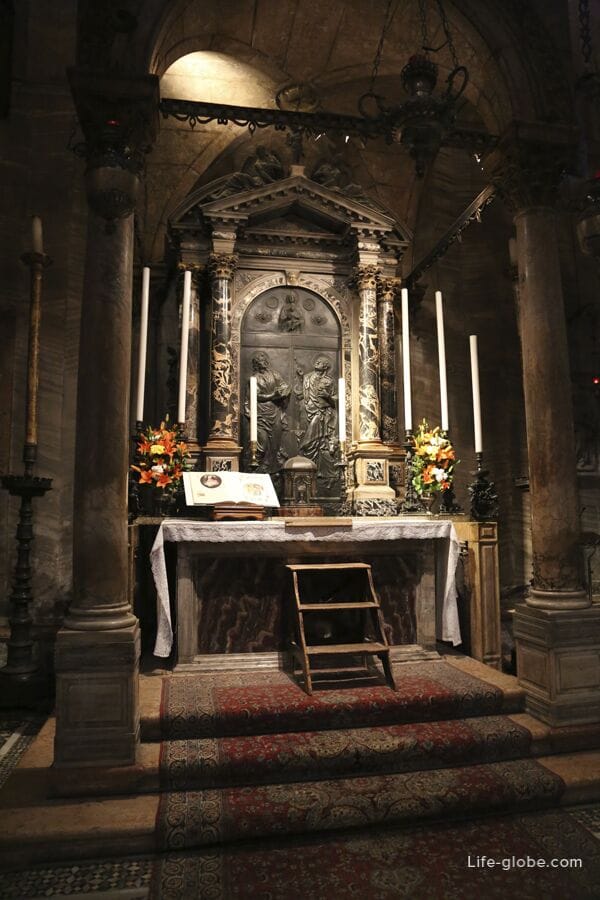
Next to the main altar, where the relics of the evangelist St. Mark are kept in the sarcophagus, there is a "Pala d'Oro" ("Golden Altar"), which is considered the most valuable decoration of the basilica.
The altar is surrounded by a Gothic altar screen dated 1394. The work of the Venetian brothers Pierpaolo and Jacobello dalle Masenye consists of 14 beautiful marble statues depicting the 12 apostles with the Virgin and Saint Mark, and dates back to the end of the 14th century. It is crowned with a bronze and silver Crucifix. On the left is the pulpit for readings from Scripture, and on the right is the platform from which the newly elected doge was presented to the people.
The ancient ciborium of green marble stands on four columns of eastern alabaster decorated with historical episodes from the gospels (13th century).
Until the middle of the 20th century, d’The Oro, which was considered the festive altar of the basilica, was not freely available. It was opened at the solemn moments of worship, and at other times it was closed with an everyday altar image. Currently, D has fallen’Oro can be visited for a fee.
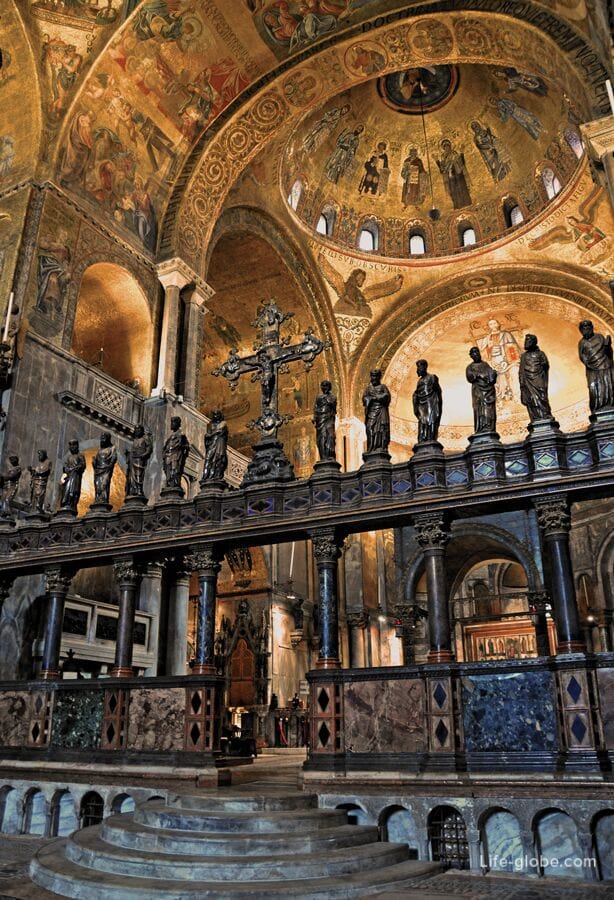
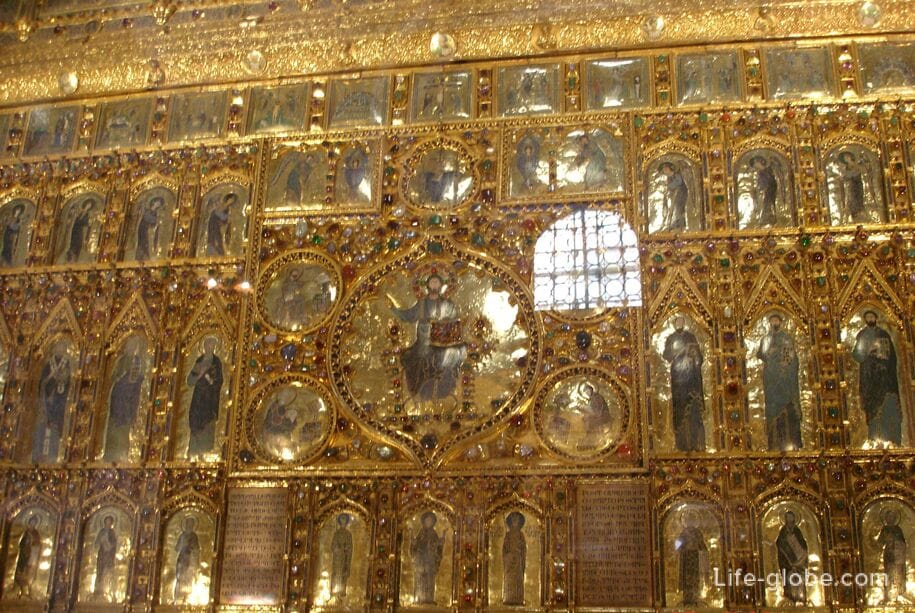
Also notable in the cathedral is the Museum of St. Mark (museo di San Marco, Loggia dei Cavalli), which was created at the end of the 19th century.
The museum houses objects of various kinds and origin, belonging to the Church of St. Mark during the history.
One of the most prestigious works is the St. Mark's quadriga, moved from its original position in the center of the facade after the last restoration.
In the Sala dei Banchetti hall there is the everyday altar of Paolo Veneziano, a painting on wood dating from the middle of the 14th century, illustrating stories from the life of St. Mark.
The museum also houses Persian carpets, liturgical vestments, illuminated manuscripts with texts of the liturgies of St. Mark and fragments of ancient mosaics removed from the cathedral during restoration in the 19th century. Then there are wool tapestries with episodes from the Passion of Christ and others made of silk and silver, illustrating the stories of St. Mark.
When visiting the museum, you can go out to the outdoor terrace of the cathedral and admire the views of St. Mark's Square.
A visit to the museum is possible for an additional fee.




The bell tower of St. Mark 's Cathedral
Not far from the main facade of the Cathedral of San Marco (on the square of the same name) there is a high detached bell tower of the cathedral - the bell tower of St. Mark's Cathedral (Campanile of St. Mark's Cathedral, Campanile di San Marco).
The villa is the tallest building in the historical part of Venice; it has architectural decorations and, in the upper part, a public 360-degree observation deck, which offers breathtaking views of the historic island of Venice and the lagoon from a bird's-eye view.
A visit to the observation room in the bell tower is paid. Learn more about the San Marco Campanile and the observation deck...
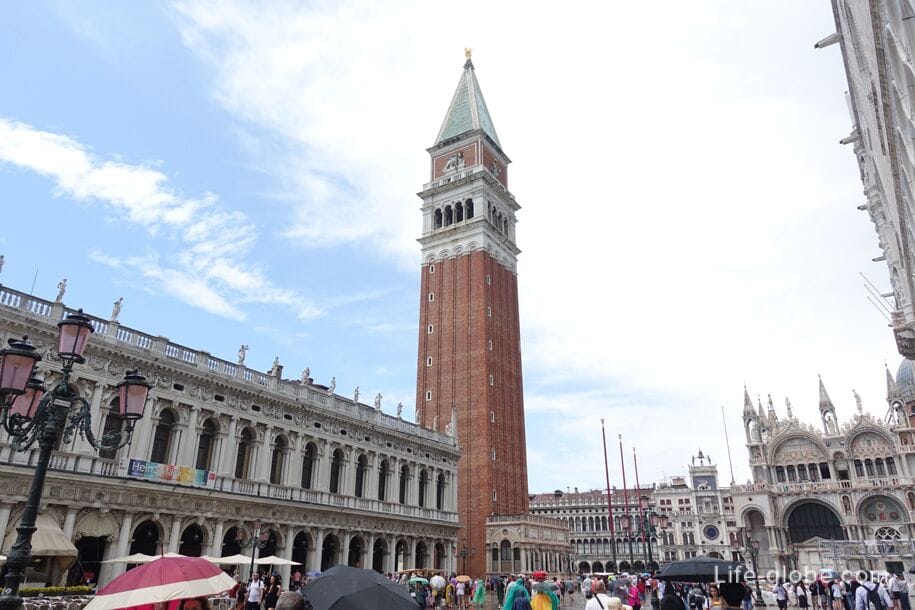

St. Mark's Cathedral together with the bell tower and St. Mark's Square form the main architectural object of Venice, which is the most famous symbol of the city and Veneto in the world. It is also one of the symbols of Venetian art and Christianity; a national monument of Italy.
Practical information
A visit to St. Mark's Cathedral is paid. A visit to the Pala d'Oro - with a surcharge. A visit to the museum (Loggia dei Cavalli) - with a surcharge. Children under 6 children - free of charge in all objects of the cathedral.
They are not allowed to enter the cathedral with large luggage. Luggage can be deposited in the luggage room before visiting the cathedral, which is located on Piazzetta dei Leoncini, a few meters from the basilica itself. The luggage storage is official and paid; things left in the cells are insured.
Masses and church holidays are regularly held in the cathedral.
A visit to the observation deck of the detached bell tower of St. Mark is paid. Children under 6 years old - free of charge.
For exact information about the opening hours of the cathedral and the bell tower, the cost and places of purchase of tickets, conditions of visit, etc., we recommend checking on the official website of St. Mark's Cathedral: basilicasanmarco.it.
Address of St. Mark's Cathedral: P.za San Marco, 328, 30100 Venezia VE, Italy.
Coordinates of St. Mark's Cathedral: 45°26'03.0"N 12°20'23.0"E (45.434167, 12.339722).
All accommodation facilities in Venice, including in the historic city center, can be viewed and booked here




